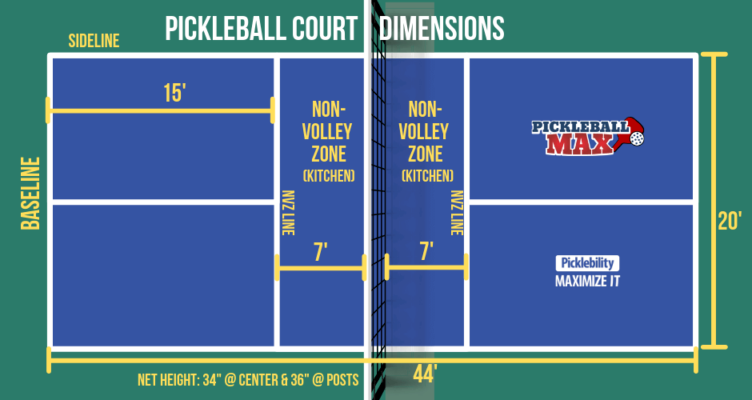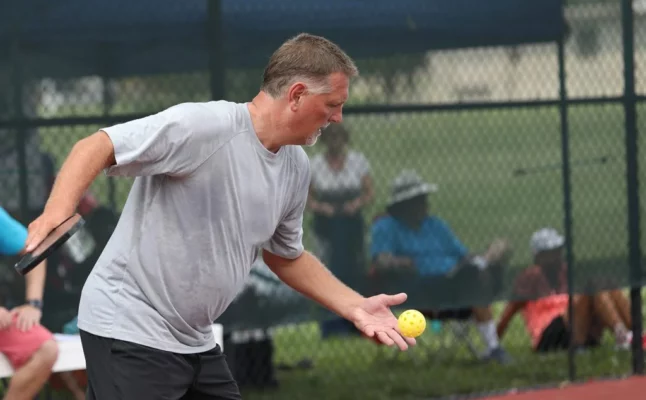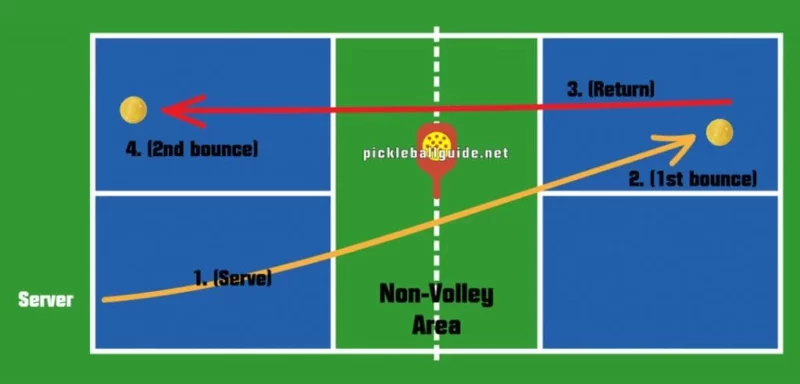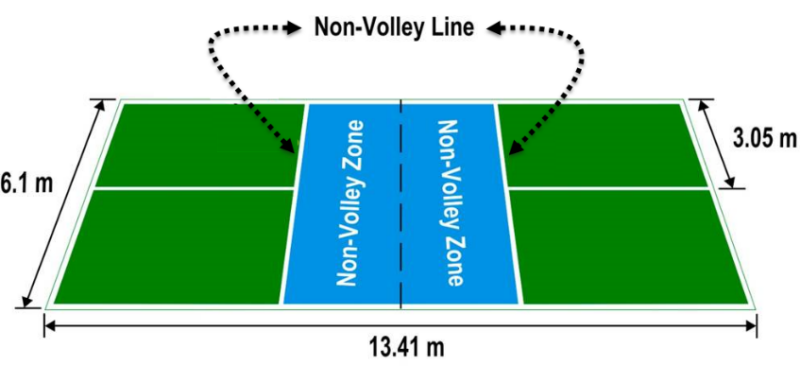What are the basic pickleball rules?
Pickleball is a fun game with a strange name that is gaining popularity. It’s been like that for a long time. Even a pandemic couldn’t stop it. It’s similar to tennis, but there are a few differences that set it apart. You’ve come to the right place if you’re not a pro and want to learn the basics. Learning all of the pickleball rules can help you compete at a better level and learn the game’s ins and outs much faster.
So, what are the five pickleball rules?
Pickleball has five main rules: the ball must stay inbounds, each side should have one bounce, serving must be done near the baseline, the serve cannot land in the no-volley zone, and the game must terminate at 11, 15, or 21 points. There are other minor rules, such as the ball cannot bounce twice.
If you’re looking for pickleball paddle recommendations, check out the guides below:

Rule #1: The Ball Must Stay Within Boundaries
Pickleball’s ball cannot fall out of boundaries, unlike most racquet or paddle sports. The white lines on either side of the court define where the ball can and cannot be hit.
You lose your serve or give the ball back to the opposing team if you hit the ball out of bounds. This inaccuracy, however, puts you at a disadvantage. Furthermore, it has the ability to change the game’s final outcome.
The good news is that you aren’t absolutely doomed if you accidentally strike the ball out of bounds. Pickleball is unique in that the ball must bounce during both the serve and the return of serve, negating some of the advantages of serving.
Even if you serve “out,” you have a better chance of returning to the net, which is where most points are gained. One of the primary differences between pickleball and other net-centric sports is this basic change.
Hitting the ball out of bounds is difficult, but hitting it into the net or beneath it is even more difficult. All three of these errors are referred to as ‘Faults.’
Pickleball differs from other sports in that an error gives the ball to the opposing team. When you’re serving, you can only score. You get the ball and the chance to score a point if you win the point as the return of serve team.
However, fewer flaws are critical.
The less mistakes you make, the better your chances are of winning.
According to experts, if you make fewer errors, you will win more games. Even 5.0 players are prone to hitting a lot of safe shots and let their opponents to make the mistake.

Rule #2: You must adhere to proper serving guidelines.
The serving rules are straightforward. If you want to learn how to play pickleball, follow these steps:
- Choose the server using a coin toss, a randomized number generator, or something similar. Fortunately, the server receives little profit, ensuring a level playing field for both parties.
- The ball must be held below the waist and underhand. This formation is required for the game to begin. Maintain a one-foot space behind the baseline to ensure that the service begins at the right distance.
- Hit the ball diagonally across the court to the opposing side. You can’t hit it straight across in singles play since it will cause a fault. The first service must be on the right side of the court, followed by the left side, and so on.
- If you make an inaccurate serve or a fault, the following serve will either go to your partner if you’re playing doubles or directly to your opponent if you’re playing singles.

Pickleball Rule #3: Each side must have one bounce, often known as “The Two Bounce Rule.”
This is undoubtedly the most significant and distinctive regulation in pickleball. And it’s one that newbies sometimes overlook, especially if they’re serving.
Allowing the ball to bounce twice on your side is a simple way to lose the point (which is obviously not what you want). If you’re serving or returning a hit to the opposing side, make sure it only bounces once on your side. Your serve is over when the ball bounces twice.
On that note, both the serve and the return of serve must have at least one bounce each side. When the ball comes back in your direction after the serve, make sure to let it bounce once before hitting it. To say it another way, you cannot volley your opponent’s return of your team’s serve.
In addition, the return of serve must be permitted to bounce, which is unique to pickleball. If you serve and your opponent hits a deep return, you must wait for the ball to bounce before playing it.
Following the two-bounce rule, any team may play the ball in the air or let it bounce. Both singles and doubles are subject to this restriction.

Pickleball Rule #4: The ball must not touch the no-volley zone during the serve.
Anywhere inside the bordered box that sits 7 feet away from the net is a no-volley zone. On both sides of the court, there is a no-volley zone, one for each team.
Because it’s the only site in the entire area of play with highlighted zones, you’ll know where the kitchen line is. The “kitchen line” is another name for it.
“Stay out of the kitchen,” which means you can’t enter this portion of the court unless the ball bounces within this quadrant.
You lose your serve if the ball touches the no-volley zone during the serve. You must go above and beyond. However, you are free to toss the ball inside the kitchen area after that. This is known as a “drop-shot,” and it is a characteristic pickleball shot.
In terms of serving, though, aim for the baseline rather than the kitchen line. The more extensive the service, the better. In fact, keeping your opponent at the baseline while you’re at the kitchen line is a basic winning strategy for players of all skill levels.
To put it another way, to enter the kitchen, the ball must land in the kitchen, but only after a valid serve.
On serves, striking the ball beyond the no-volley zone is simple, but it’s one of the most difficult strokes to hit consistently
If you serve beyond the kitchen line but not deep enough, you’re inviting your opponent to charge forward and get to the kitchen line as soon as possible.
If you hit it too deep, however, you risk serving the ball too far and knocking it out of bounds. It takes practice to get it just right.
Rule #5. At 11, 15, or 21 points, the game is over.
Pickleball is traditionally played to 11 points. The winning team, however, must win by at least two points. The game continues if you have 11 points and the other team has 10.
Some pickleball games have a maximum score of 15, while others have a maximum score of 21. The most common point totals in a solo pickleball game are 11 or 15. When playing doubles, the most usual point totals are 15 or 21. You’ll have the opportunity to discuss the total with your teammates and opponents.
There aren’t many rule variations based on the overall number of points. When playing an 11-point game, the teams trade sides when the first team reaches 6 points. Games that go to 15 or 21 points, on the other hand, switch whenever the first team reaches 8 points.
It’s also worth remembering that you can only score a point while serving. This would be the sixth rule if we had to add one because of its significance.
Conclusion
Pickleball is a simple, enjoyable game that anybody can learn to play, but it is also a game rich in strategy. There are, nevertheless, a few basic pickleball rules that every newcomer should grasp. Fortunately, this article has all of the information you’ll need to head down to the court and begin playing pickleball right now.
